Mourning doves – also known as turtle doves and rain doves – are some of the most iconic birds in North America. They typically live in both open and semi-open habitats and are incredibly common right across their range. At 12 inches long, they are fairly small birds yet are easily recognized by their distinctive silhouette and haunting call. But that’s not all, as there is much more to these graceful birds than meets the eye. Join us as we discover 10 incredible mourning dove facts!

1. Mourning Doves get their Name from their Call

©Tom Cantaffa/Shutterstock.com
Given their name, it would be easy to assume that mourning doves get their name from some association with death. However, they are named because of the sound that they make. This is because mourning doves make a very plaintive, sad sound. Although they make a distinctive coo-woo sound at first, it is often mistaken for the call of an owl. Incredibly, the sad-sounding call that mourning doves make is usually made by males who are trying to attract a mate.
2. Mourning Doves Mate for Life

Mourning doves mate for life and sometimes mourn the loss of their partner.
©Bonnie Taylor Barry/Shutterstock.com
When mourning doves undertake their courtship ritual to find a mate, it’s not a yearly occurrence for them as it is for many other birds. Instead, they choose their mate very carefully and make a real lifelong commitment. This is because when mourning doves mate, they mate for life – forming a bond that in some cases, even death can’t break. That’s right, there have even been reports of some mourning doves mourning their lost mate and returning to the place where they died. In most cases, they do eventually move on and choose a new mate, but there is still something incredibly heartbreaking about it.
3. Seeds make up 99% of Mourning Doves’ Diet
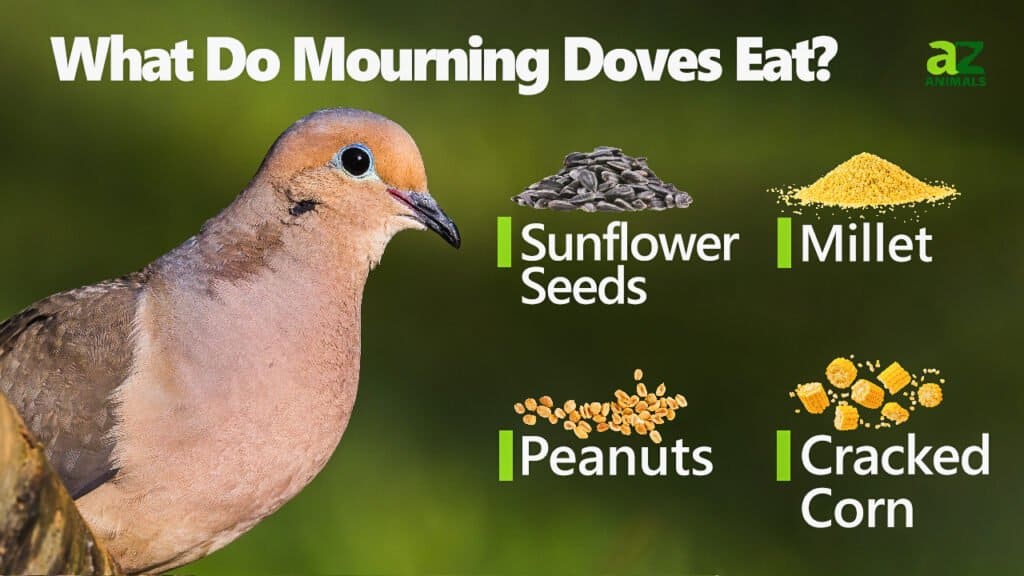
Although many birds enjoy eating a wide range of insects, mourning doves actually don’t have much of an appetite for them at all. Instead, they are granivores which means that they mainly eat seeds. In fact, seeds make up a whopping 99% of a mourning doves diet! However, despite this, they still have a really varied diet. Some of the seeds that mourning doves eat include rapeseed, millet, sunflower seeds, corn, and buckwheat. The other 1% of their diet is made up of herbs, fruit, and wild grasses.
4. Mourning Doves Feed With Crop Milk
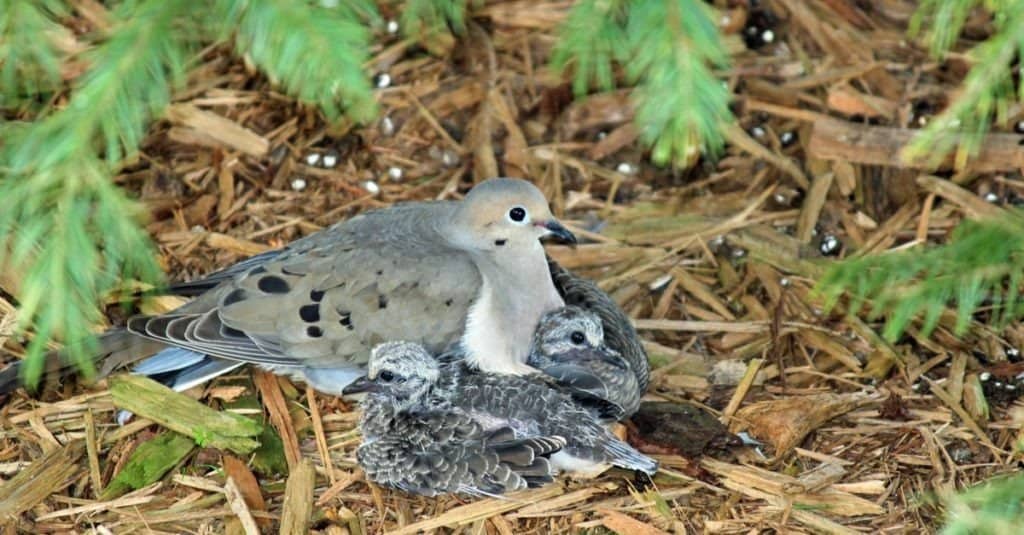
Both parents regurgitate crop milk to feed chicks.
©Todd Maertz/Shutterstock.com
Although adult mourning doves feed predominantly on seeds, chicks eat something known as crop milk for the first few days to a week. Crop milk is a unique substance that forms in the lining of the crop and is regurgitated to feed the chicks. Incredibly, crop milk is produced by both male and female mourning doves, meaning that both parents can feed the chicks. Although it bears the name milk, crop milk is pale yellow and semi-solid. It contains very high levels of protein and fat to provide all the necessary nutrients for baby birds. After around a week, the parents then begin to regurgitate partially digested seeds for them.
5. Mourning Doves can Raise 6 Broods Per Year

Nests are usually built in trees, and mourning doves typically lay 2 eggs per brood. Incubation takes two weeks, and the role is shared by both parents.
©dontcry/Shutterstock.com
Mourning doves are extremely prolific breeders and can raise up to 6 broods in one year, although the average is 3. It’s essential that mourning doves are able to reproduce so quickly as quite a lot of chicks die at a young age. Nests are usually built in trees, and mourning doves typically lay 2 eggs per brood. Incubation takes two weeks, and the role is shared by both parents. The male tends to sit on the eggs in the morning and the afternoon while the female then sits on them in the evening and through the night.
6. Mourning Doves can Reach 55mph

Mourning doves can reach 55mph.
©Phoo Chan/Shutterstock.com
It might come as quite a surprise, but mourning doves are extremely fast and capable fliers. In fact, they have been recorded as flying at an incredible 55mph! Mourning doves can achieve such breathtaking speeds because they are well adapted to flying. They have long, pointed wings, which are often described as being “falcon-like.” They also have pointed tails, which are longer than the tails of most other dove species. Both of these adaptations help them to be streamlined when in the air as well as being strong fliers.
7. Mourning Doves Migrate in Large Flocks

Paloma makes perfect sense for this bird considering the world translates to “dove.”
©iStock.com/Janet Griffin-Scott
Although some mourning doves in warmer regions remain where they are, most mourning doves migrate south to a warmer climate for the winter. When they migrate, mourning doves migrate in large flocks of up to 50 birds – typically by day. Mourning doves leave their summer ranges in late August or early September and fly along well-traveled flight paths known as flyways. Flyways are migration paths that are used by vast numbers of birds. Mourning doves that breed in the most northern regions have the longest migration to reach warmer regions and can travel thousands of miles to do so.
8. Mourning Dove don’t Sleep with their Head Under their Wing
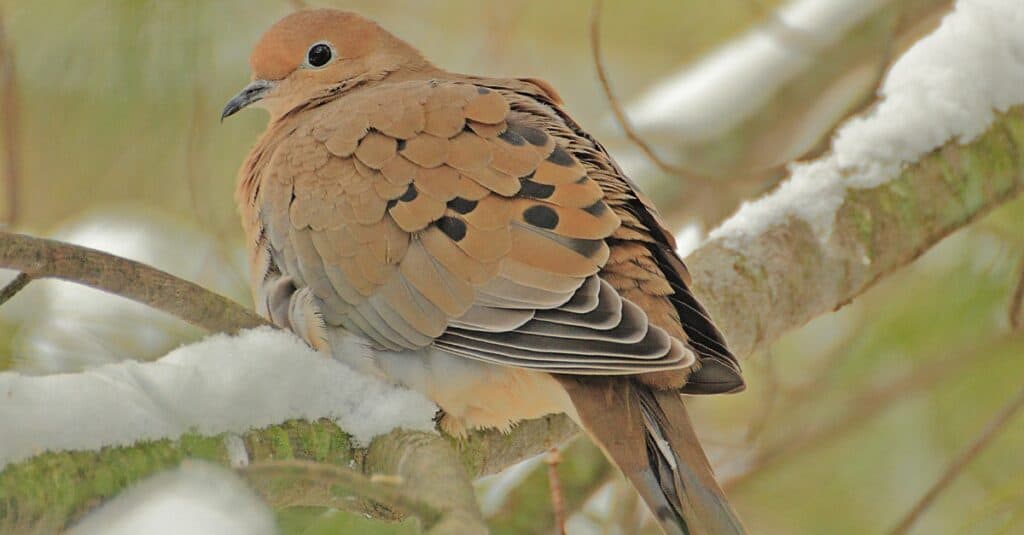
Mourning doves sleep with their head resting between their shoulders while held close to their body.
©iStock.com/gregvandeleest
There are few sights more iconic than a bird sleeping peacefully with its head tucked away underneath its wing. Yet, mourning doves are not birds you will ever see sleeping like that. This is because they don’t sleep like that at all. Instead, mourning doves simply sleep with their head resting between their shoulders while held close to their body.
9. Mourning Doves Drink Using Suction
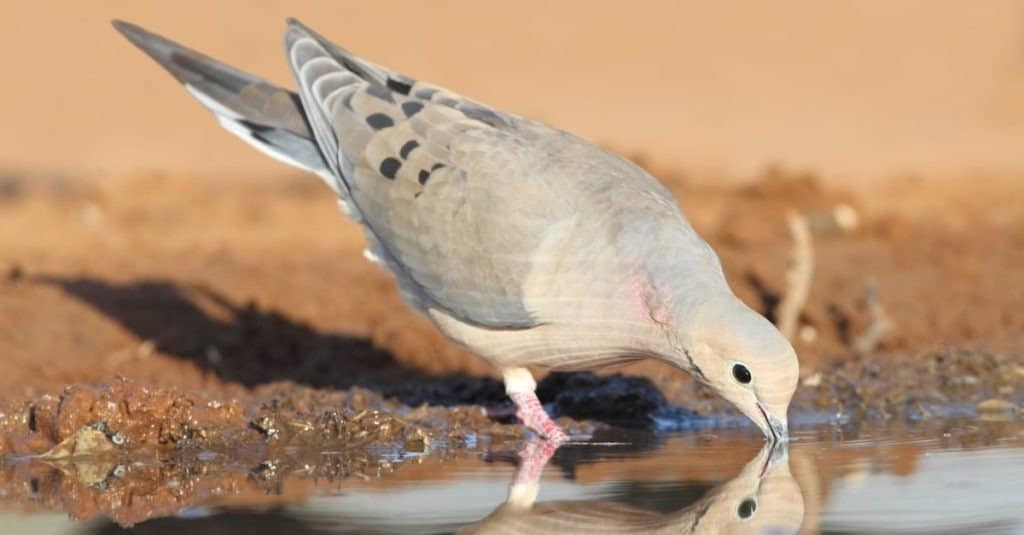
Mourning doves can suck water into their beak and swallow without lifting their head.
©iStock.com/BrianLasenby
Another typical bird action is the way that they drink by filling their beak with water and tipping their head back to swallow it down. But once again, mourning doves are completely unique. This is because they drink using suction, just like many other animals. This means that they can suck water up into their beak and swallow without needing to raise their head.
10. Mourning Doves are Popular Gamebirds
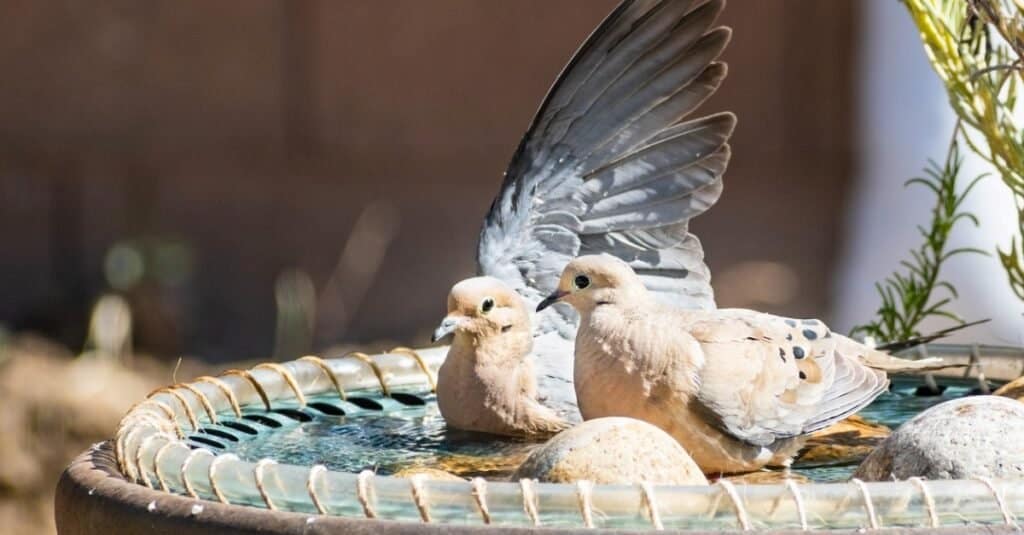
The mourning dove population seems to be increasing, despite them being popular game birds.
©iStock.com/Sundry Photography
As surprising as it might seem, mourning doves are incredibly popular as gamebirds, and there are more than 20 million birds shot every year in the United States for sport and meat. Despite this, there have been no declines recorded in their population. In fact, it is thought to be increasing. This is largely down to them being prolific breeders and their ability to reproduce extremely quickly.
The photo featured at the top of this post is © Phoo Chan/Shutterstock.com
Thank you for reading! Have some feedback for us? Contact the AZ Animals editorial team.






